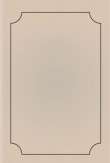You are here
قراءة كتاب The Oaths, Signs, Ceremonies and Objects of the Ku-Klux-Klan. A Full Expose. By A Late Member
تنويه: تعرض هنا نبذة من اول ١٠ صفحات فقط من الكتاب الالكتروني، لقراءة الكتاب كاملا اضغط على الزر “اشتر الآن"

The Oaths, Signs, Ceremonies and Objects of the Ku-Klux-Klan. A Full Expose. By A Late Member
covered. If the meeting is in a building of any kind, there is never a light to show the faces of those assembled; and if there be a fire, the Brothers keep away from its light as much as possible. Always, when practicable, the meetings are held in some wilderness, and no meeting is ventured upon for any general business, that requires the presence of more men than might accidentally meet, without the utmost precaution in the way of sentinels, etc.
The organization includes fully officered companies, regiments and brigades. Of course every brother knows the officers of his own company, but that is all he is supposed to know. The commander of the company knows where his orders come from, and that is all he is expected to know. The matter is never discussed, but every one understands that the officers are men who have seen service in the late war, and are qualified for their positions. When a new company is organized, its officers are appointed by the commander of the regiment to which it is to belong, and the order of appointment is transmitted through the captain of a neighboring company, who details men to organize the new one.
The orders for my company I knew came from Columbus, and that, of course, was the headquarters of the regiment to which I belonged. I never knew the name of our Colonel, but he was an old brigade commander in Longstreet's corps.
 The Southern Cross.
The Southern Cross.MODE OF RECOGNITION
When a Brother desires to ascertain whether a stranger belongs regularly to the order, he must not pursue the inquiry in the presence of others. Engaging the stranger in conversation, the brother finally says:
"I reckon you're a true Southerner?"
If the stranger answers directly, "Yes," the Brother continues:
"May be, then, you've been tested?"
The word "tested" refers to the initiation of the order. If the stranger be also a Brother, he replies:
"I know what is the work of Silence and Darkness."
The Brother then with the right hand makes the sign of recognition, as given in the illustration, and the other responds by repeating the motion, and bringing the fore-finger and thumb together, the whole representing the hammer of a gun as it is cocked and snapped.
The Brothers are cautioned against the use of these signs without cause, and no one is allowed to seek out members by the above means, merely for the gratification of curiosity.
The sign of the Crescent is used for summoning meetings of the companies at irregular times, and when business of importance is to be attended to at once. In towns and hamlets this sign is made anywhere, so that it is likely to be seen on a fence, or sketched with a stick on a walk; and sometimes leaves torn in two, so that the halves resemble rude crescents, are dropped about where they will attract the attention of the Brothers, while no one else will notice them.
It must be understood that the companies never meet to discuss any proposition. That is done without a general meeting, which is only called when some initiation is to take place, or when some action requiring the whole or part of the band has been decided on.
A general rallying cry is provided for cases of emergency, as, for instance, if a party of Brothers were engaged in any expedition, and should encounter such resistance as to make aid necessary. The cry is: "The Cross! The Cross! The Cross!" I never knew this cry to be used, but when the


